57 Fascinating and Surprising Facts about Liverpool

Situated in the northwest of England, Liverpool (also referred to as the Merseyside) is an amazing and incredible city, globally famous for its historic trading ports and being the gateway to Europe, as well as its numerous museums, footballing glory, tourist attractions, and being the birthplace of The Beatles.
Along with its rich history are the more recent accolades, such the stream of award-winning Hollywood exports hailing from the city, its UNESCO World Heritage status, and ambitious plans that continue to shape and evolve this innovative city with a diverse melting pot of culture into the modern era.
Did you know that Liverpool is officially the World Capital City of Pop? Yep, that’s according to the Guinness World Records, what with being the birthplace of the most famous musical band, and a host of other chart-toppers over the decades.
In this post I’ve put together a collection of the most fascinating and lesser-known facts that will make you want to visit Liverpool one day.
Scroll on to read 57 Interesting and Incredible Facts about Liverpool:
Table of Contents
Liverpool Map
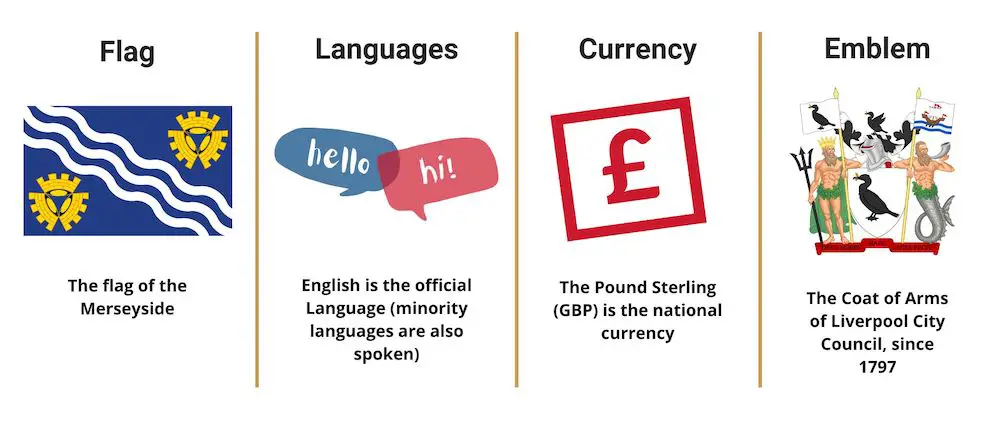
57 Fascinating and Surprising Facts about Liverpool
17 General Facts about Liverpool
#1. The Pop Capital of the world
The Guinness Book of Records holds Liverpool as the World Capital of Pop with more Scousers hitting Number 1 than any other town or city, making Liverpudlians natural chart toppers.
#2. Liverpool is a UNESCO World Heritage Site
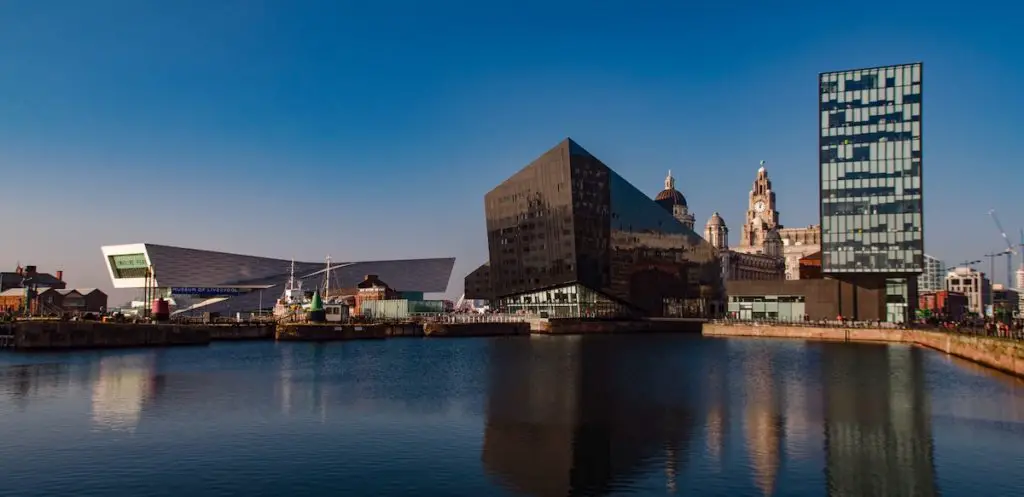
In 2004 the city of Liverpool was awarded the status of UNESCO World Heritage Site. The city was dubbed an excellent example of a commercial port, and received the status due to its 19th and 20th Century graded buildings. The site comprises of Pier Head, Albert Dock, Stanley Dock, the Commercial District, and the Cultural and Merchants Quarters.
#3. Liverpool means ‘Muddy Pool’ in old English
There are several theories as to how the city got its name, and the most commonly accepted one is that Liverpool meant muddy pool in old English.
#4. Liverpool’s Broadgreen is the oldest operating railway station in the world
#5: The first bananas and pineapples in Europe arrived in Liverpool
With Liverpool’s coming to prominence as the most efficient and largest port in the world, it is only natural that it became the main gateway to Europe. Following the discovery of the Americas and with more and more ships setting out to explore the rest of the world, sailors started bringing back lots of new products, including bananas and pineapples.
Some Liverpudlian buildings have pineapples on the front of them, and the reason for this was due to those products being so exotic and rare at the time, only the rich could afford them and thus they would display them on their houses, as a symbol of wealth.
#6. The largest clocks in the country
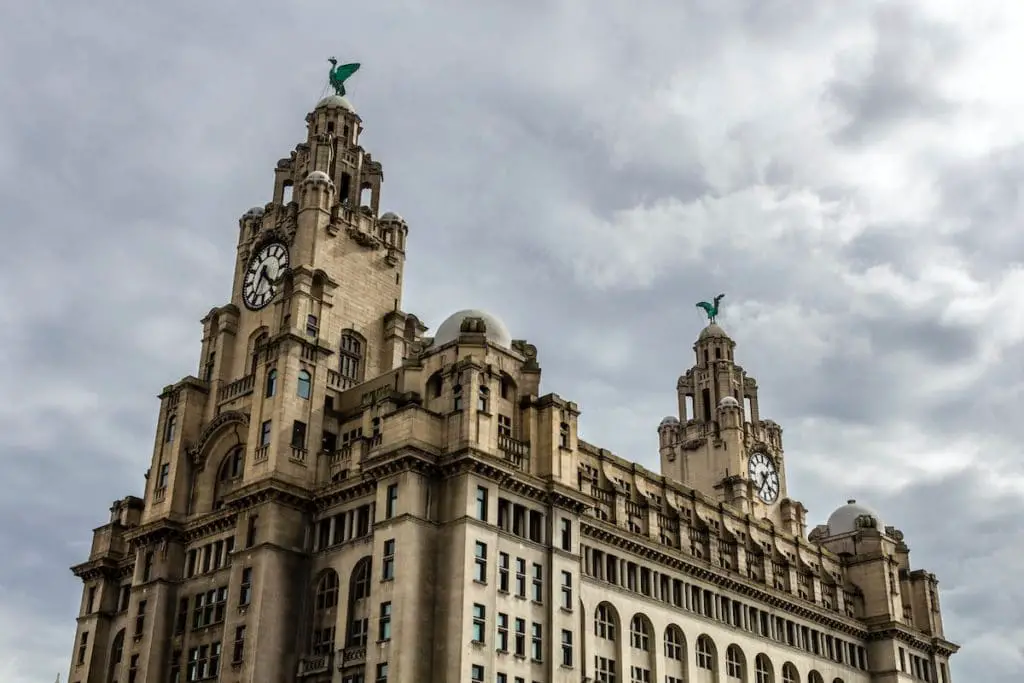
The clock faces on the Liver Building are the largest in the United Kingdom at 25 feet in diameter, whilst the ones on Big Ben are 23 feet in diameter.
#7. Liverpool’s Overhead Railway was the world’s first electric elevated railway
#8. You won’t find a copy of The Sun newspaper in Liverpool
The controversial right-wing newspaper The Sun boasts about being the country’s most popular tabloid, however you’ll no find a single copy of it within the city of Liverpool.
This is because the paper published false allegations on its front page shortly after the Hillsborough Stadium disaster in which 97 people were crushed to death. The Sun accused Liverpool supporters of having initiated the disaster that led to their deaths. In response, the whole city stood by its people and boycotted The Sun (the paper has seen a huge decline in sales over the years, with other cities following suit in the boycotts). The boycott campaign, named “Total eclipse of the sun”, has been running for 30 years.
#9. The world’s first all-female sextuplets were born in Liverpool
On Friday 18th November 1983 the world’s first set of all-female sextuplets were born at Oxford Street maternity hospital to Graham and Janet Walton from Wallasey.
#10. Scouse originates from the word lobscouse, a stew that sailors ate

The term Scouse is often used to define a person from Liverpool (alongside Liverpudlian), and the Liverpool dialect, as well as the traditional stew that originates from the city.
#11. A city of inventions and innovations
Liverpudlians are proud of the innovation and inventiveness of its people and the massive impact those inventions have had on the world. Some of the most revolutionary random inventions include the overhead railway, crosswords, the RSPCA, football nets, purpose-built ambulances, chess clubs, and the hovercraft. Liverpool was also home to the world’s first lending library open to the public, housed in The Lyceum building on Bold Street. Other amazing discoveries include the discovery of the link between sugar and diabetes by Liverpool physician Matthew Dobson, in 1774.
Here’s 11 things you didn’t know were invented by Scousers
#12. People used to watch the Beatles perform during their lunch break

We all know Liverpool is famously the birthplace of the Beatles, but what’s really interesting is that The Beatles would perform during the day at the world-famous Cavern Club in the city centre, and Liverpudlians were so crazy about them that they would queue in front of the Cavern Club during their lunch break, eating a sandwich on the go, just to get to see the Fab Four play a couple of songs.
#13. The world’s first school of tropical medicine
Liverpool’s overseas trade resulted in the outbreak of tropical diseases and to tackle this, shipping magnate Sir Alfred Lewis Jones, founded the world’s first School of Tropical Medicine in 1898 and donated £350 to research these outbreaks. The LSTM has led the field in cutting-edge research and teaching ever since, including finding the link between Malaria and mosquito bites.
#14. Liverpool One is Europe’s biggest open-air shopping centre
Situated in the city centre, Liverpool One has over 170 shops and restaurants making it one of Europes best shopping destinations. Building an open-air shopping centre in the north of England seems like an odd idea, however it was designed to ensure that wherever you stand within Liverpool One, you’ll be able to see one of the city’s landmarks.
#15. Cilla Black used to work in the Cloakroom of the Cavern Club
TV presenter Cilla Black was originally working at the Cavern Club in the cloak room when the Beatles were performing there. John Lennon spotted the musical talent in Cilla and convinced his manager to give her an audition, which kickstarted her career. Since then she presented many TV shows including Blind Date and Surprise Surprise, among others.
#16. Famous artists names adorn the Wall of Fame in Liverpool
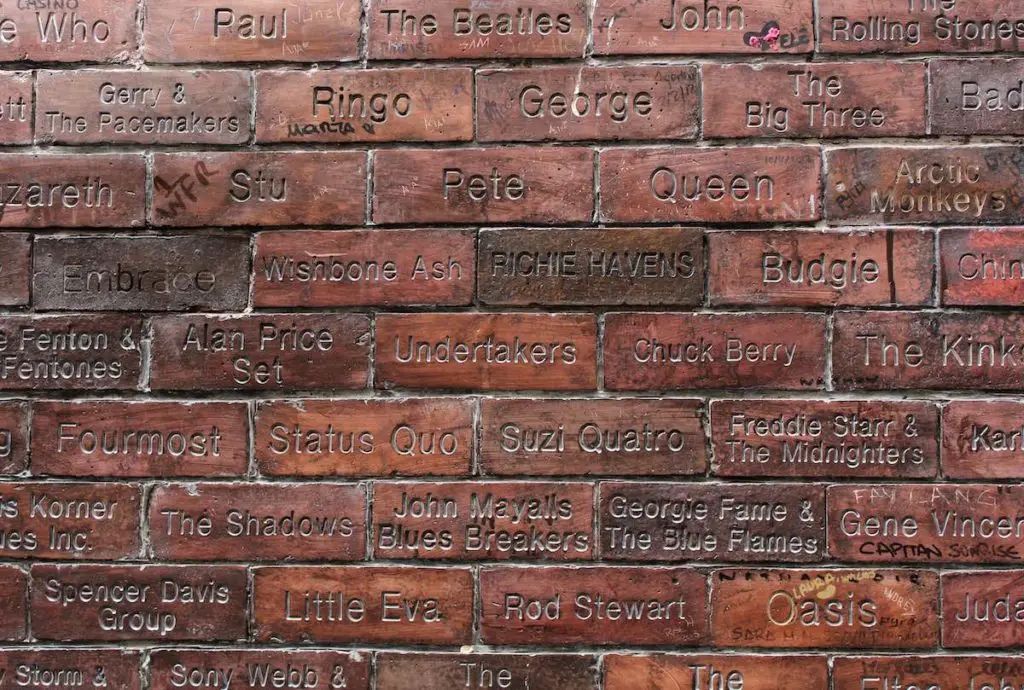
Just across from the Cavern Club is the Cavern Pub, and beside that is a large brick wall of fame that features artist who followed in the Beatles footsteps by playing at the Cavern Club. Dozens of names are engraved in the bricks, however their location is not random. The artist or band’s agent would put down a bid and pay to be featured on the wall, and the higher the amount – the closer they would get to the Beatles (right in the middle).
Playing at the Cavern is traditionally part of the debut for bands, which means you can assume that the closer you re the Beatles, the higher the expectations your agent had for you. Some of them are accurate, others slightly less. For example, Adele is located pretty far from the Beatles and yet she became an international superstar.
#17. There is a secret tunnel between the Cavern Pub and the Cavern Club
The Cavern Club initially did not have a licence to sell alcohol, and legend has it that there’s a secret tunnel beneath the Cavern Club and the Cavern Pub, that was used by bands so they could drink at the pub and then jump down the tunnel to get straight out on stage in the Club.
15 Liverpool history facts
#18. Old spellings of the city include Livpul, Lyuerpole, Lytherpole and Litherpoole
#19. Liverpool was founded by King John (aka the villain in Robin Hood)
History buffs and movie fans will love this fun fact. Liverpool was founded by King John in 1207 AD. He was the king of England at the time, and Richard the Lionheart’s brother. Name sounds familiar? That would be because King John features as the villain in Robin Hood, except at that point, he was Prince John.
During the early 1200s, King John’s favourite pastime was attacking the Irish. In order to do this, he had to sail from Chester and pay a tax to the earl. To avoid paying this tax, he decided to found his own port city, and chose Liverpool in 1207.
#20. The American Civil War began and ended in Liverpool – the first shot was fired by a cannon made by Preston & Fawcett in Liverpool, and the war ended when the Confederate ship ‘CSS Shenandoah’ surrendered in the Mersey.
#21. Liverpool became a wealthy and important city due to the Slave Trade

During the 18th century 80% of Britain’s slave activity (and 40% of the world’s) would pass through Liverpool. The strategic location of the city (being the gateway to Europe) along with its highly advanced docking technologies made Liverpool the main port during the Transatlantic Slave Trade.
Almost all of the world’s cotton production arrived in Liverpool before being transported down the road to Manchester to be manufactured and sold to the world.
Even after slavery was abolished in England in 1833, most of the goods passing through Liverpool were the result of slavery in America, who did not abolish slavery until 32 years later.
#22. The first prototype for the skyscraper was built here
Oriel Chambers on Water Street was the first building in the world to be built with a metal frame, and is considered the world’s first modern building.
#23. The world’s first passenger railway line
In September 1830, the world’s first ever passenger railway line connected Liverpool’s Crown Street to Manchester’s Liverpool Road, influencing the development of major railway systems across Britain.
Built by George Stephenson, it was the first to rely on steam-powered locomotives, and the first to be entirely double-tracked, use a signalling system, have a timetable, and carry mail.
By 1893, Liverpool opened the world’s first overhead railway, which was the first to use automatic and electric color light signals.
#24. In 1812, Liverpool’s John Bellingham became the first man to assassinate a Prime Minister
Spencer Perceval was the only British prime minister to have been assassinated, and the only attorney-general to have become prime minister.
#25. Charles Dickens adored Liverpool and announced the world premiere of A Christmas Carol at St George’s Hall
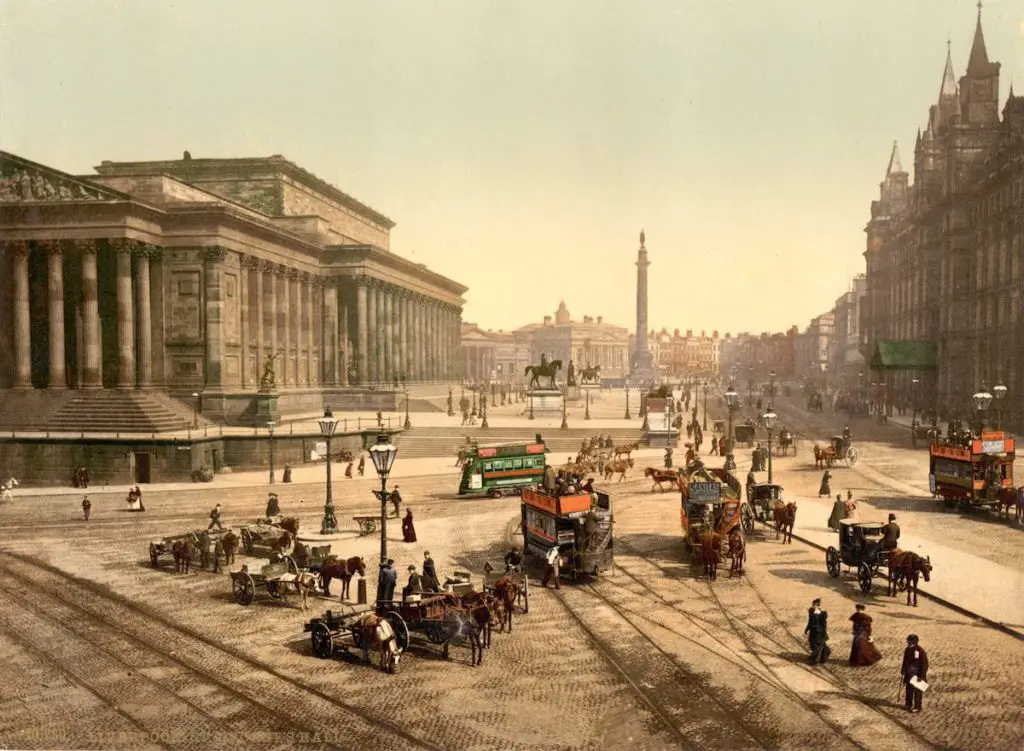
The famous author adored the city so much that he gave many public readings at his favorite venue St. George’s Hall. Dickens was at the origin of what was known as the Penny Readings – anyone could go and see Dickens reading for one penny. He had so much success in Liverpool that the police at times had to turn down over 3,000 people!
#26. The Old Dock was the world’s first commercial wet dock
Another interesting fact about Liverpool is that the world’s first ever commercial wet dock was built here. The Thomas Steer’s Dock, now known as the Old Dock, was completed in 1715. This revolutionary dock accommodated up to 100 ships and was originally a tidal basin accessed directly from the river. The dock led to Liverpool’s establishment as the leading European port and subsequent world trading port
#27. The world’s oldest animal charity
The Royal Society for the Prevention of Cruelty to Animals (RSPCA) was founded in a coffee shop on Bold Street in October 1809, originally known as the “society for the suppression of Wanton Cruelty to Brute Animals”. The Liverpool Branch now the longest established animal charity in the world.
#28. John Lennon Airport was the UK’s first provincial airport
Liverpool airport, better known these days as Liverpool John Lennon Airport, was the first provincial airport in the country when it opened on 1st July 1933.
#29. Albert Dock was the world’s first modern fireproof dock
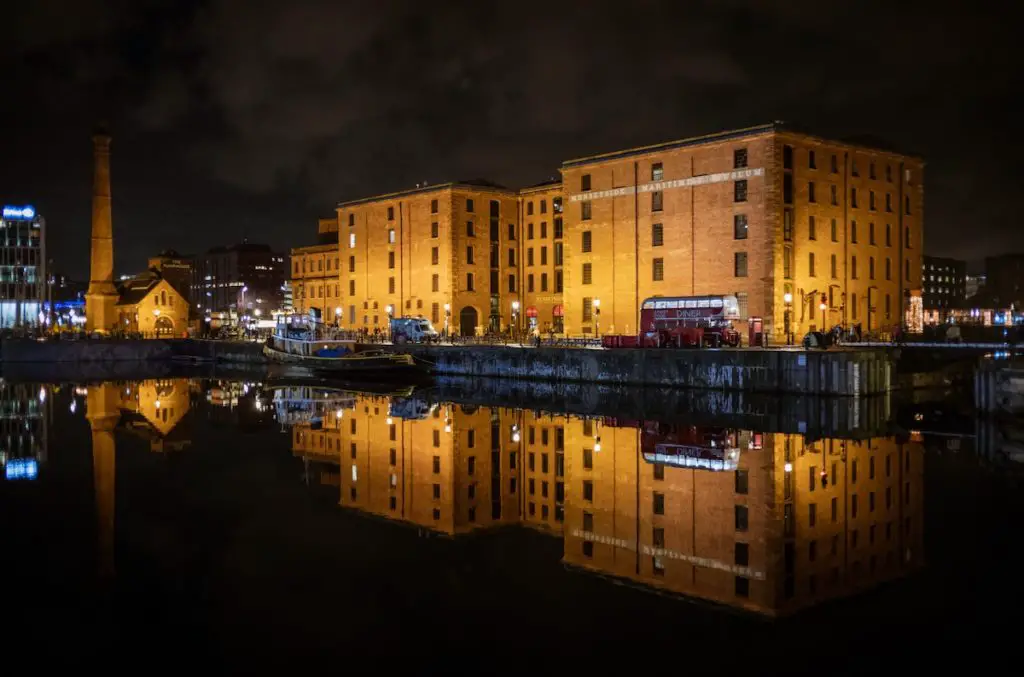
Liverpool’s docks dominated global trade by the 19th century, and when Albert Dock opened in 1846 it completely changed the way docks worked forever. Its warehouses were fireproof and secure, traders could do deals before their import taxes were due, and hydraulic cranes hauled heavy cargoes across the flagstones. Liverpool was the first port to use artificial tides, reducing waiting time to serve ships from 3 weeks down to 2 and half days.
🚶🏽♂️Historical Tours in Liverpool
- Have a walk through time in Liverpool and learn more about the city’s history on this History of Liverpool Walking Tour with a historian guide
#30. Around 75% of Scousers have Irish roots
One of the more interesting facts about Liverpool population – it has the strongest Irish heritage of any UK city, with around 75% of the city’s population having Irish roots. Due to the close proximity of the ports, many people fled Ireland to escape the Great Famine between 1845-1849, and by 1851, more than 20% of Liverpool’s population was Irish.
#31. Australia’s 10-pound immigration scheme started in Liverpool
After the Second World War, Australia had a massive shortage of people and skills, and being part of the Commonwealth, the British government set up an immigration scheme offering British citizens the chance to move to Australis for £10.
In a nutshell, they were offered the same life in Australia for £10. So they would be given the same job they were doing in England, and even the same houses. Some Liverpudlian neighbourhoods were replicated to perfection. Thousands of Brits took up the opportunity and moved Down Under with their entire families and friends. They only has to pay £10 to travel on a Cunard’s ship from Liverpool to Australia. These immigrants were nicknamed by the Australians and New Zealanders as the “Ten Pound Poms”.
#32. The world’s oldest operational mainline train station

Liverpools’ Lime Street Station is the world’s oldest still serving, grand terminus mainline station. Opened in 1836, it remains to this day the main station for Liverpool city centre. St. George’s Hall sits opposite the station, and the impressive building was said to be built to impress people as they exited the station.
5 Geographical facts about Liverpool
#33. Liverpool was historically part of The West Derby Hundred
Liverpool historically lay within the ancient hundred of West Derby in the south west of the county of Lancashire. It became a borough from 1207 and a city from 1880, and by 1889 all historic counties were replaced by Administrative counties of England.
#34. Liverpool’s only natural mineral spring was discovered in St James cemetery in 1773
The source of the spring is still a mystery, and there’s a lot of spooky myths surrounding it, from possessing healing properties to turning black when boiled!
#35. The Calder Stones are older than Stonehenge

Stonehenge may be the most famous monolithic landmark, but did you know that Liverpool’s Calder Stones are even older? Situated in the Harthill Greenhouses in Calderstones Park, the six sandstone blocks were nice part of a chartered tomb, believed to be Neolithc, meaning they were constructed before Stonehenge sometime between 10,000-4,500 BC.
#36. Once the world’s largest port
From the 19th to the early 20th century Liverpool was the world’s largest port city. Such was the scale of the port and the numerous sprawling docks that the city used to be the gateway of Europe for trade and also the world’s busiest immigration port, for Europeans emigrating to the United States. Today Liverpool is the fourth largest city in the UK.
#37. 82,000 bodies lie underneath St. John’s Gardens
Another really spooky fact about Liverpool is that you could be walking over the mass graves of 82,000 people without even knowing it!
The site in question is St. John’s Gardens, which were once used as a graveyard during the 18th century for those too poor to afford a standard burial. Although many have been moved, there are still tens of thousands of bodies there.
10 Facts about Liverpool culture
#38. The first city to be awarded the title: European Capital of Culture
After celebrating its 800th anniversary in 2007 Liverpool was given the status of European Capital of Culture in 2008, the first city to be awarded the title. The title generated over £750 million for the local economy.
#39. Liverpool is home to Europe’s oldest Chinese community
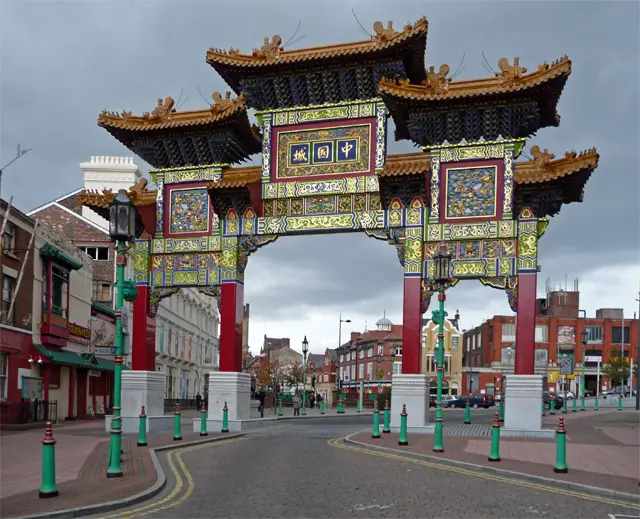
The city is known as the home of Europe’s longest established Chinese community due to it being the gateway of Europe for international traders. Liverpool also boasts the largest Chinese Arch in Europe (and the largest outside of China), as well as being home to the oldest Black community in the UK.
#40. The largest variety of art collections under single ownership
In Liverpool, you’ll find the greatest variety of historic paintings, specimens, objects, and over 80,000 artifacts – from a Titanic lifejacket to Egyptian, Greek, Roman, and Anglo-Saxon collections – held under single ownership in the entire country, at the National Museums Liverpool.
#41. Liverpool built the first new national museum in the UK in 100 years
The Museum of Liverpool is the first new national museum built in the UK for over a century, and is the world’s first national museum devoted to the history of a regional city.
#42. One of the UK’s most diverse cities
Liverpool is so culturally diverse that according to 2016 statistics, more than 51% of people in the city speak a language other than English at home. In fact, more than 60 languages are spoken in the city every day!
#43. The lasting legacy of The Beatles
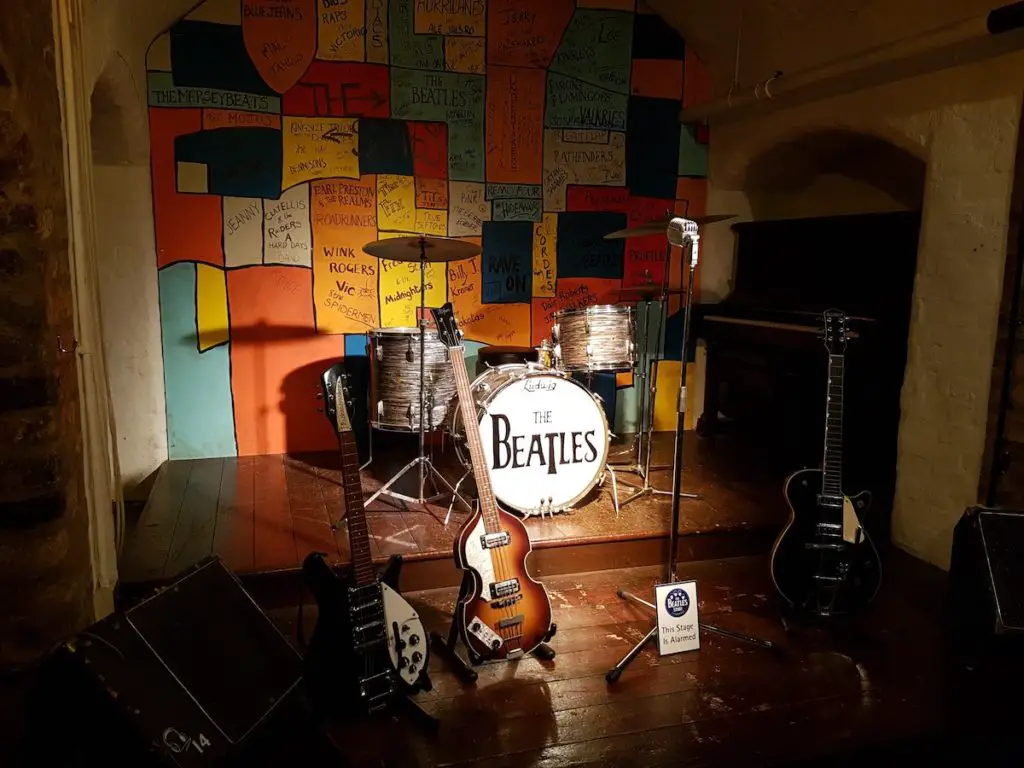
The Beatles, born in Liverpool, may have travelled the world with their music, but they definitely left a lasting impression in their home city. There’s the John Lennon Airport, multiple statues of the band members, the A Hard Day’s Night Hotel, a yellow submarine, and more.
You can follow their footsteps and walk down Penny Lane, or catch a gig at the iconic Cavern Club, surrounded by The Beatles memorabilia.
#44. Liverpool is world famous for its Pop music roots
The Beatles aren’t the only band to hail from Liverpool, other bands such as Atomic Kitten, The Wombats, and Ladytron have their roots in the city too.
As well as holding the world record for the most number one hit singles released in a single city (56 in total) and being dubbed the City of Pop by The Guinness Book of Records, Liverpool also became a UNESCO City of Music in 2015.
#45. A popular filming location for blockbuster movies
It’s not only music that Liverpool is known for in pop culture, as the city is also a frequent filming location for big movies and TV shows dating all the way back to 1897! 366 films and TV shows were shot in Liverpool in 2018 alone.
The Batman (2022), Fantastic Beasts (2016), Peaky Blinders (2013), Captain America (2011), and Sherlock Holmes (2009) to name a few, all filmed in Liverpool. The central library was also said to be a source of inspiration for the sets in Harry Potter. The city has doubled for Paris, Venice, and Moscow, among others.
#46. William Brown Street is the only street on earth with only cultural buildings
Nicknamed the cultural district and referred to as the “Cultural Quarter”, William Brown Street is remarkable for its concentration of public buildings which include the Walker Art Gallery, the World Museum, Liverpool Empire Theatre, and the Central Library to name a few. It’s the only street in the world consisting exclusively of such cultural buildings.
#47. Liverpool holds the largest concentration of museums in the UK outside of London
Another interesting fact about Liverpool is that it’s home to one of the largest collections of museums in Europe, and the biggest in the Uk outside of London. Most of the museums are located in Albert Dock but you’ll also find many on William Brown Street.
If you’re visiting Liverpool, be sure to check out the following museums:
- The Museum of Liverpool
- Tate Liverpool
- The Beatles Story
- Slavery Museum
- The Bluecoat
- World Museum
- Walker Art Gallery
10 Facts about Liverpool football
#48. The UK’s most successful footballing city
Home to both Liverpool FC and Everton FC, Liverpool is the most successful footballing city in England and the UK. Between the clubs, they have won 27 League championships, 6 European Cups, 3 Uefa Cups, 1 Cup Winners cup, 12 FA Cups, 8 League Cups, and a FIFA club World Cup.
#49. Liverpool FC was formed as a breakaway from Everton FC
The club was founded following a dispute between the Everton committee and John Houlding, club president and owner of the land at Anfield. After eight years at the stadium, Everton relocated to Goodison Park in 1892 and Houlding founded Liverpool F.C. to play at Anfield.
#50. Liverpool FC’s first kit was blue and white
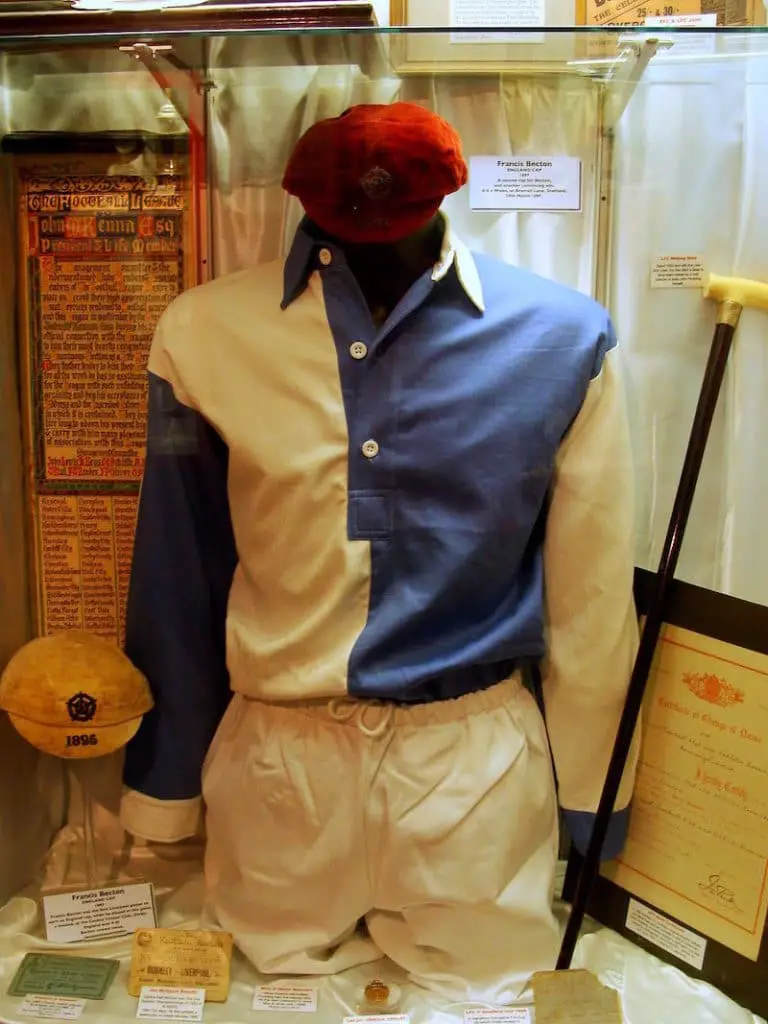
Interestingly the famous Reds never always donned the all-red kit. From their foundation in 1982 until 1896 Liverpool FC wore blue and white, whilst Everton FC wore red – they used to wear each other’s current home kits! After this short stint, the colors swapped and have stayed this way ever since.
#51. The Merseyside Derby is the longest-running top-flight derby
The first ever Merseyside derby (matches between Liverpool FC and Everton FC) took place on 13th October 1894. To date its been played 240 times, with Liverpool FC winning 97 times, Everton winning 67 times, and a draw 76 times.
Bonus Fact: The Merseyside derby has produced more red cards than any other in the history of the Premier League!
#52. Everton’s Dixie Dean has scored the most amount of goals in a football season
Scoring a total of 60 goals throughout his career, Dean is regarded as one of the greatest centre-forwards of all time.
#53. The tower on Everton’s badge is named after Prince Rupert, an English Civil War General
Otherwise known as Everton Lock-Up, the structure was used to hold prisoners in the 18th century. It was named after Royalist leader Prince Rupert because the area was used by his soldiers as a base for attacking the Parliamentarian-held Liverpool Castle (143 years before the tower was actually built).
#54. Liverpool FC featured on the first-ever Match of the Day programme
The football analysis programme is one of the BBC’s longest-running shows, first airing on 22nd August 1964.
#55. Liverpool FC is one of the most valuable clubs in the world
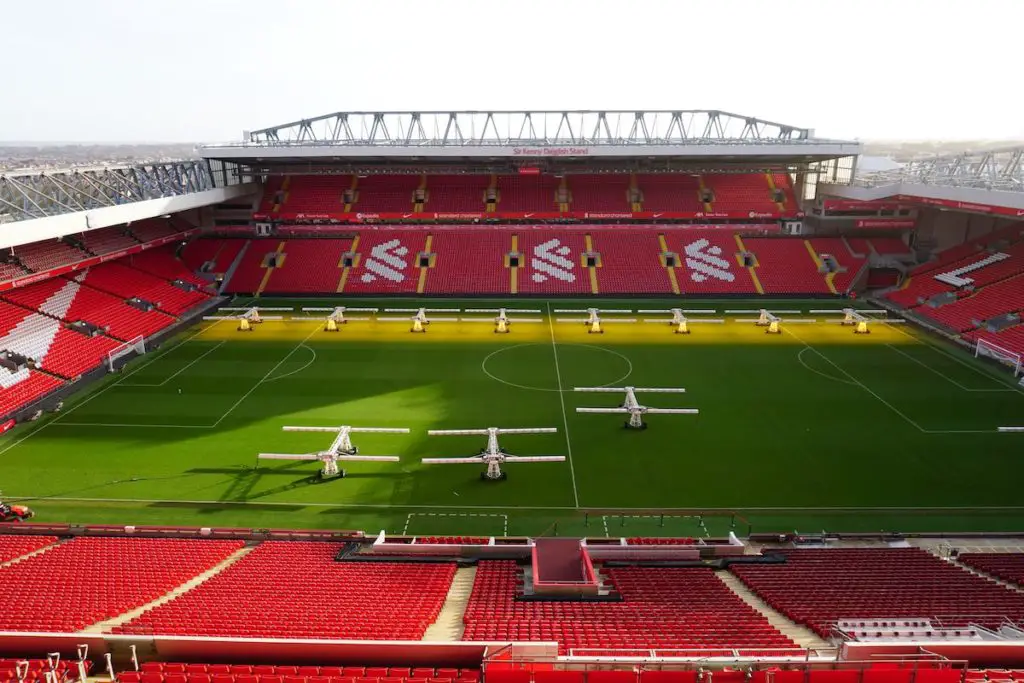
It ranks 5th in the world behind Manchester United (4th), Bayern Munich (3rd), Real Madrid (2nd) and Barcelona (1st). It is also among the most widely supported clubs in the world.
#56. It took 27 years to clear the names of Liverpool supporters in the Hillsborough Stadium disaster case
The Hillsborough Stadium tragedy was a fatal human crush during a football match between Liverpool and Nottingham Forest in 1989, which caused the death of 96 people and injured 766. The Liverpool supporters had been wrongly accused of having initiated it. Liverpudlians fought for 27 years to get justice and it wasn’t until 2016 that the story was set straight.
#57. Liverpool FC and Manchester United are historic rivals
As well as local rivalry with Everton FC since its foundation, Liverpool FC has a fierce rivalry with Manchester United for several decades now. The two northern power clubs are considered the greatest clubs in England (despite Man United doing quite poorly currently), with both clubs holding more trophies than the rest of England’s clubs, with Liverpool sitting at the top with regards to silverware.
So there you go – 57 of the most fascinating fun, and lesser known facts about Liverpool.
I hope you find this post an interesting and informative read, and that it inspires you to visit this incredible city some day!
UK Travel Guides
For more information about the UK, here’s some useful posts:
- Here’s the 10 Best Things to Do in Bath, England
- Learn my tips on how to Visit Stonehenge for Free
More city facts posts:
- 35 Interesting Facts about Mumbai, India
- 34 Fun Facts about Mexico City
- 17 Lesser Known Facts about New Delhi
Download your FREE 20-page Travel Planner Guide
And get access to all my best budget travel tips, checklists, additional freebies, and more.

Liverpool Wiki File:
General Information
More information, statistics and general facts about Liverpool, UK, updated as of 2024:
- Land area: 199.6 km2 (77.1 sq miles)
- Founded: AD 1207 by King John
- City Status: 1880
- Sovereign State: United Kingdom
- Country: England
- Total Population: 912,000 (6th in UK)
- Life expectancy: 80.4 years (female), 76.6 years (male).
- Currency: GBP Pound Sterling
- Ethnicity: 88.8% White, 2.5% Mixed, 4.1% Asian, 2.6% Black, 1.8% Other
- Districts: 6 Districts: Liverpool, Sefton, Knowsley, Wirral, St. Helens, Halton
- Mayor: Joanne Anderson
- Lord Mayor: Mary Rasmussen
- GDP: £51.5 billion
- GDP per capita: £25,143
- Official Website: liverpool
- Time zone: UTC 0 (Greenwich Mean Time)
- Country code: GBR
- Driving side: left
- Main railway stations: Liverpool Central, Liverpool Lime Street
- Airport: Liverpool John Lennon Airport (LPL)
- Postcode area: L
- Dialling Code: 0151
- Weather: lowest: 3C (winter) peak: 21C (summer)
- Famous residents: The Beatles (band), Jason Isaacs (actor), Billy Fury (singer), Cilla Black (TV host), Stephen Graham (actor), Jodie Comer (actor)
Liverpool Facts FAQs:
What is an interesting fact about Liverpool?
Liverpool was once the largest port in the world.
From the 19th to the early 20th century Liverpool was the world’s largest port city – accounting for 40% of all the world’s trade. Such was the scale of the port and the numerous sprawling docks that the city used to be the gateway of Europe for trade and also the world’s busiest immigration port, for Europeans emigrating to the United States.
What is Liverpool best known for?
Liverpool is well known for music what with being the birthplace of greatest band of all time, The Beatles, and is recognized by the Guinness World Records as the World Capital City of Pop, due to having more Top 10 hit singles per capita than any other town or city. The city is also known historically as the world’s busiest port with the most advanced docks of the time, and being the gateway to Europe.
What was Liverpool called before?
In 1190 the city of Liverpool was first recorded as ‘Lierpul’, which originates from the Old English ‘lifer’, meaning thick or muddy water, and ‘pōl’, meaning pool or creek. Hardly inspiring!
How did Liverpool get its name?
The name originates from the Old English ‘liver’, meaning thick or muddy, and ‘pol’, meaning pool or creek, and was first recorded around 1190 as Liuerpul. According to the Cambridge Dictionary of English Place-Names, “The original reference was to a pool or tidal creek now filled up into which two streams drained.”
Who is the most famous Scouser?
Perhaps the most famous Scousers of all time are The Beatles. Other famous Scousers include footballers Wayne Rooney and Steven Gerard, TV presenters Cilla Black and Les Dennis, comedians Ken Dodd and John Bishop, and numerous actors including Jason Isaacs, Jodie Comer, Stephen Graham, Taron Egerton and Daniel Craig.
What was invented in Liverpool?
Some of the most revolutionary inventions include the overhead railway, crosswords, the RSPCA, football nets, purpose-built ambulances, dinky toys, chess clubs, and hovercraft. Other amazing discoveries include the discovery of the link between sugar and diabetes by Liverpool physician Matthew Dobson, in 1774.
Thank you for reading 57 Interesting and Incredible Facts about Liverpool
Do you know any other fun facts about Liverpool? What’s your favorite? Post your comments below!
If you enjoyed this post, share it on Pinterest so your followers can enjoy it too!

